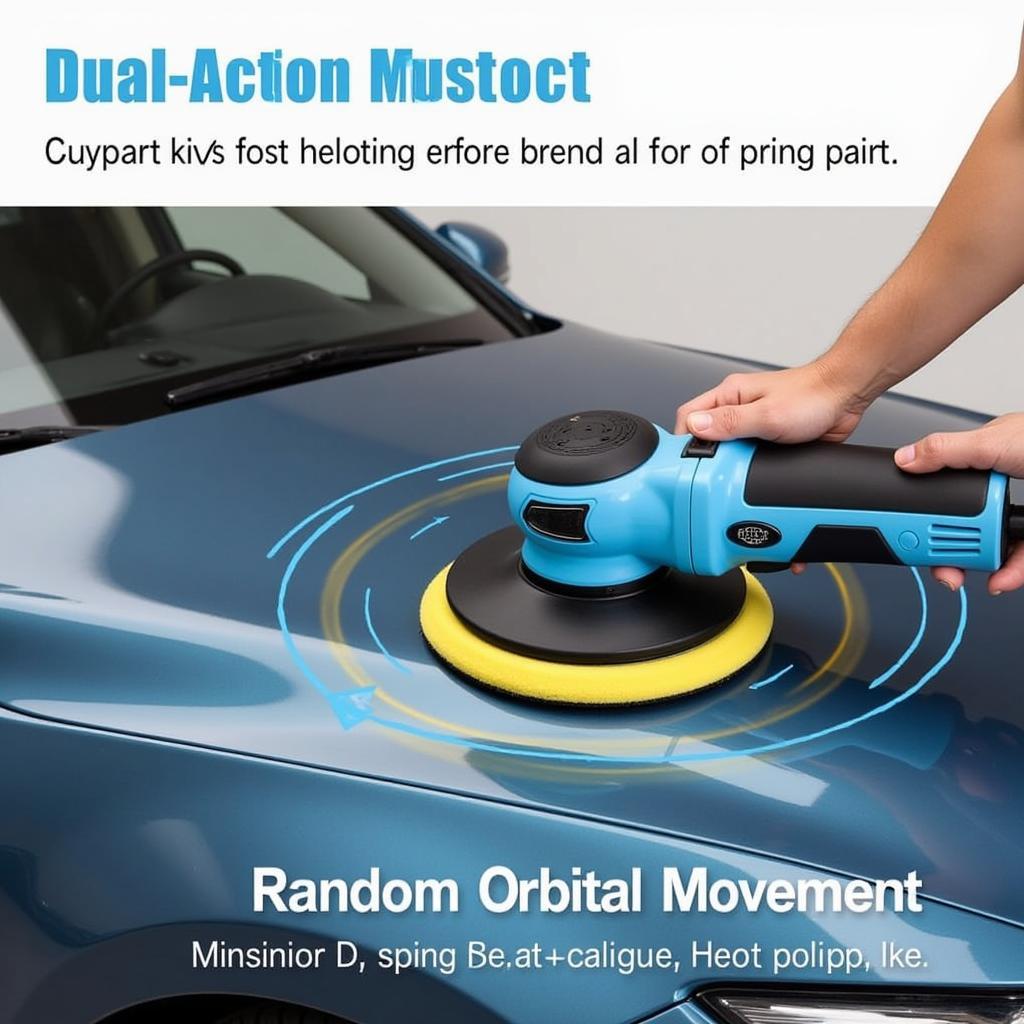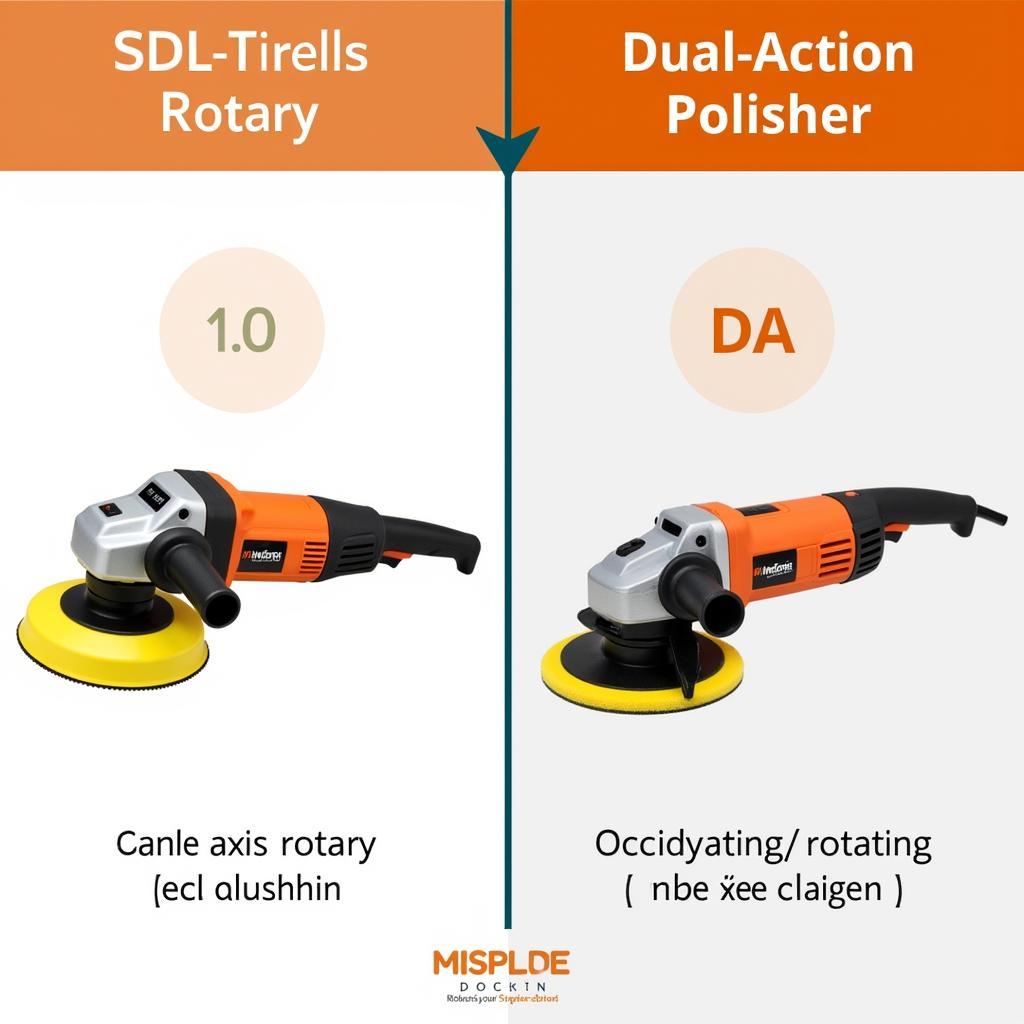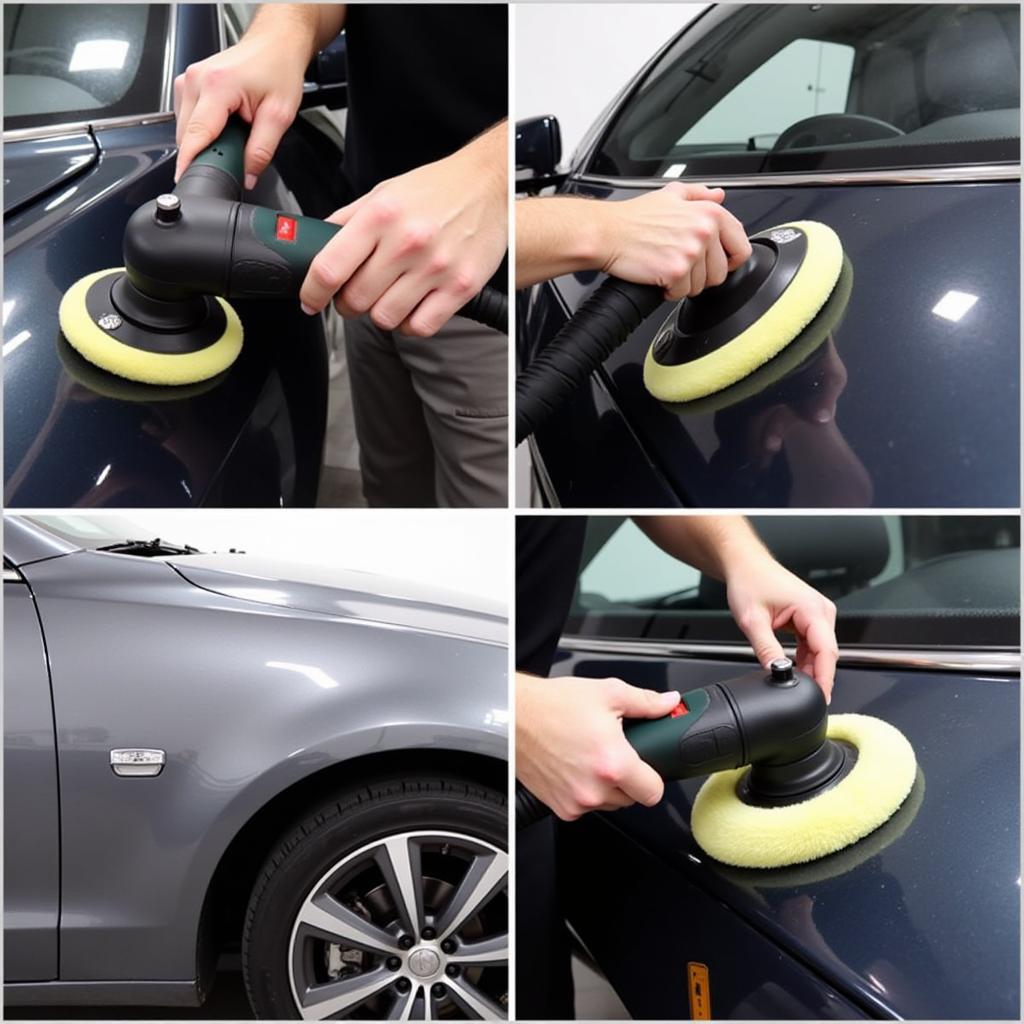A gleaming, swirl-free finish is the hallmark of professional car detailing. Achieving this perfect polish requires the right tools, and at the heart of this is the Best Buffer Polisher For Car Detailing. Choosing the right one can feel overwhelming with so many options available. This guide breaks down everything you need to know to find the perfect machine for your detailing needs, whether you’re a seasoned pro or just starting out.
Finding the right buffer polisher is crucial for achieving a flawless finish. A poor-quality machine or incorrect technique can lead to swirl marks, holograms, and even damage to your car’s paint. Investing in the best buffer polisher for car detailing is an investment in your car’s appearance and longevity. Check out our guide on the best buffer polisher for amateur car detailing if you are just starting out.
Types of Buffer Polishers: Rotary vs. Dual Action
Choosing the best buffer polisher for car detailing starts with understanding the two main types: rotary and dual-action (DA).
Rotary Polishers
Rotary polishers spin on a single axis, delivering powerful cutting action. They’re ideal for removing heavy defects like deep scratches and swirl marks but require experience to handle safely. In the wrong hands, a rotary polisher can generate significant heat and potentially burn through your car’s clear coat.
Dual-Action Polishers
Dual-Action (DA) polishers, on the other hand, oscillate and rotate simultaneously, mimicking the motion of hand polishing. This reduces heat buildup and minimizes the risk of paint damage, making them a safer choice for beginners. While they might not cut as aggressively as rotary polishers, they still deliver excellent results with the right technique and polishing pads. You can find more information about DAs in our guide on the best car detailing buffer.
 Dual-Action Polisher Demonstration
Dual-Action Polisher Demonstration
Key Features to Consider
When selecting the best buffer polisher for car detailing, consider these key features:
- Power: Higher wattage generally translates to more cutting power. However, more power isn’t always better, especially for beginners. A DA polisher with around 500-600 watts is a good starting point.
- Speed Control: Variable speed control is essential for different stages of polishing, from heavy cutting to fine finishing.
- Ergonomics: A comfortable grip and balanced weight are crucial for extended polishing sessions. Look for a polisher that feels good in your hand and isn’t too heavy or bulky.
- Pad Size: Different pad sizes are suited to different areas of the car. Smaller pads offer more control in tight spaces, while larger pads cover more ground on larger panels.
- Price: Buffer polishers range in price from budget-friendly to professional-grade. Set a budget before you start shopping and stick to it.
Top Buffer Polisher Recommendations
While the “best” polisher is subjective and depends on individual needs, some consistently receive high praise from detailers. Researching specific models will help you narrow down your options. For those starting out, the best buffer polisher for amateur car detailing guide will be beneficial. For more advanced users looking for powerful correction, explore our article on the best rotary buffer for car detailing.
 Rotary and Dual Action Polishers Comparison
Rotary and Dual Action Polishers Comparison
Polishing Pads: The Perfect Partner
The best buffer polisher for car detailing is only as good as the polishing pads you use. Different pads are designed for different levels of correction and finishing. Using the wrong pad can compromise your results. Explore our article on the best dia buffing pads for car detailing for further information.
Maintaining Your Buffer Polisher
Proper maintenance ensures your buffer polisher performs optimally for years to come. Regularly clean the backing plate and inspect the power cord for damage. Storing your polisher in a clean, dry place will also extend its lifespan.
 Car Polishing Process
Car Polishing Process
Conclusion
Choosing the best buffer polisher for car detailing is a crucial step towards achieving a show-car shine. By understanding the different types, features, and proper usage, you can confidently select the right machine for your needs and elevate your detailing game.
FAQ
- What is the difference between a rotary and a DA polisher?
- What wattage should I look for in a DA polisher?
- What size polishing pads are recommended for beginners?
- How do I maintain my buffer polisher?
- What are the common mistakes to avoid when using a buffer polisher?
- How often should I polish my car?
- What are some recommended polishing compounds and polishes?
You can also find helpful information in our guide for the best buffer polisher for amature car detailing.
For further assistance, please contact us via WhatsApp: +1(641)206-8880 or Email: [email protected]. We have a 24/7 customer support team ready to assist you.

Leave a Reply